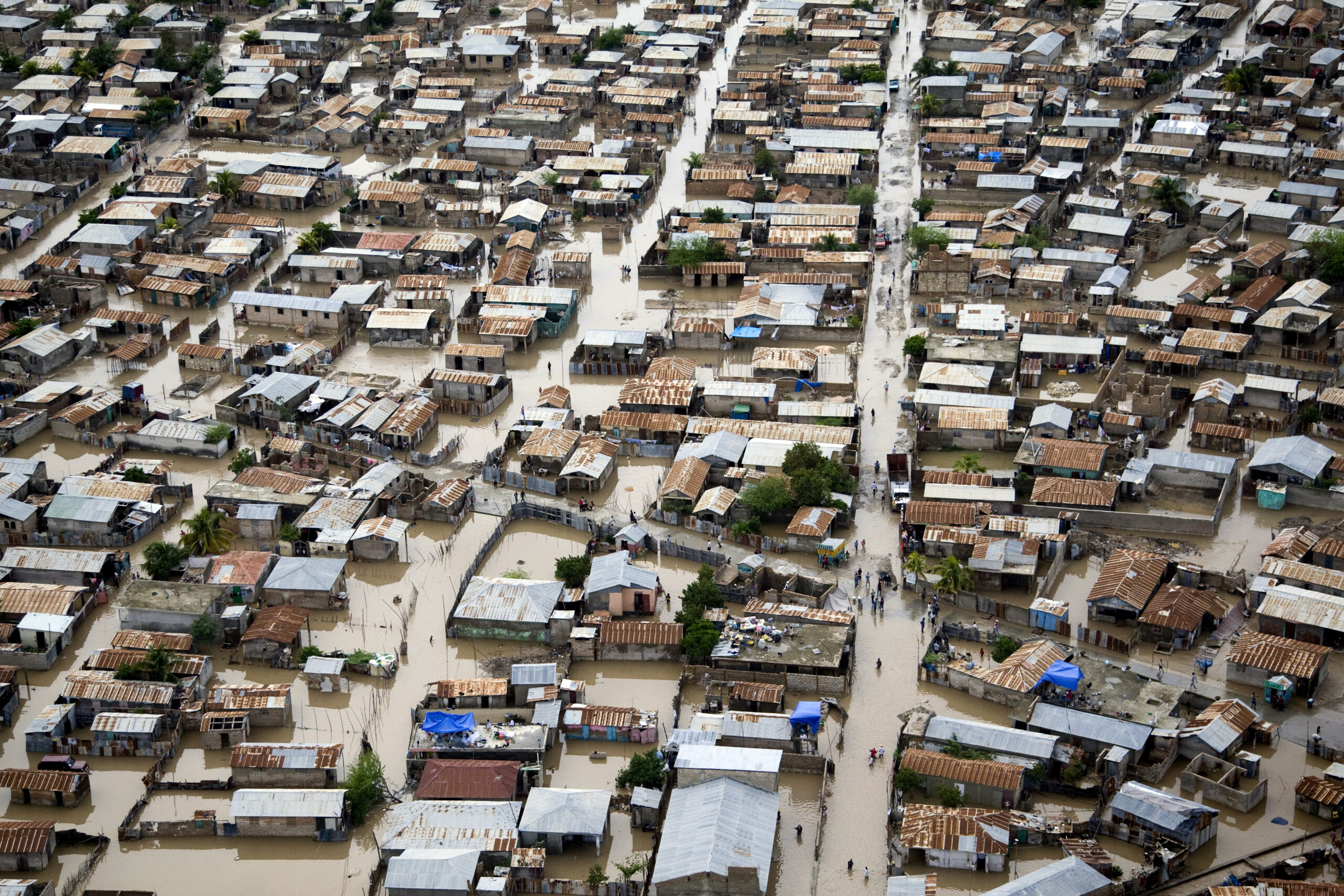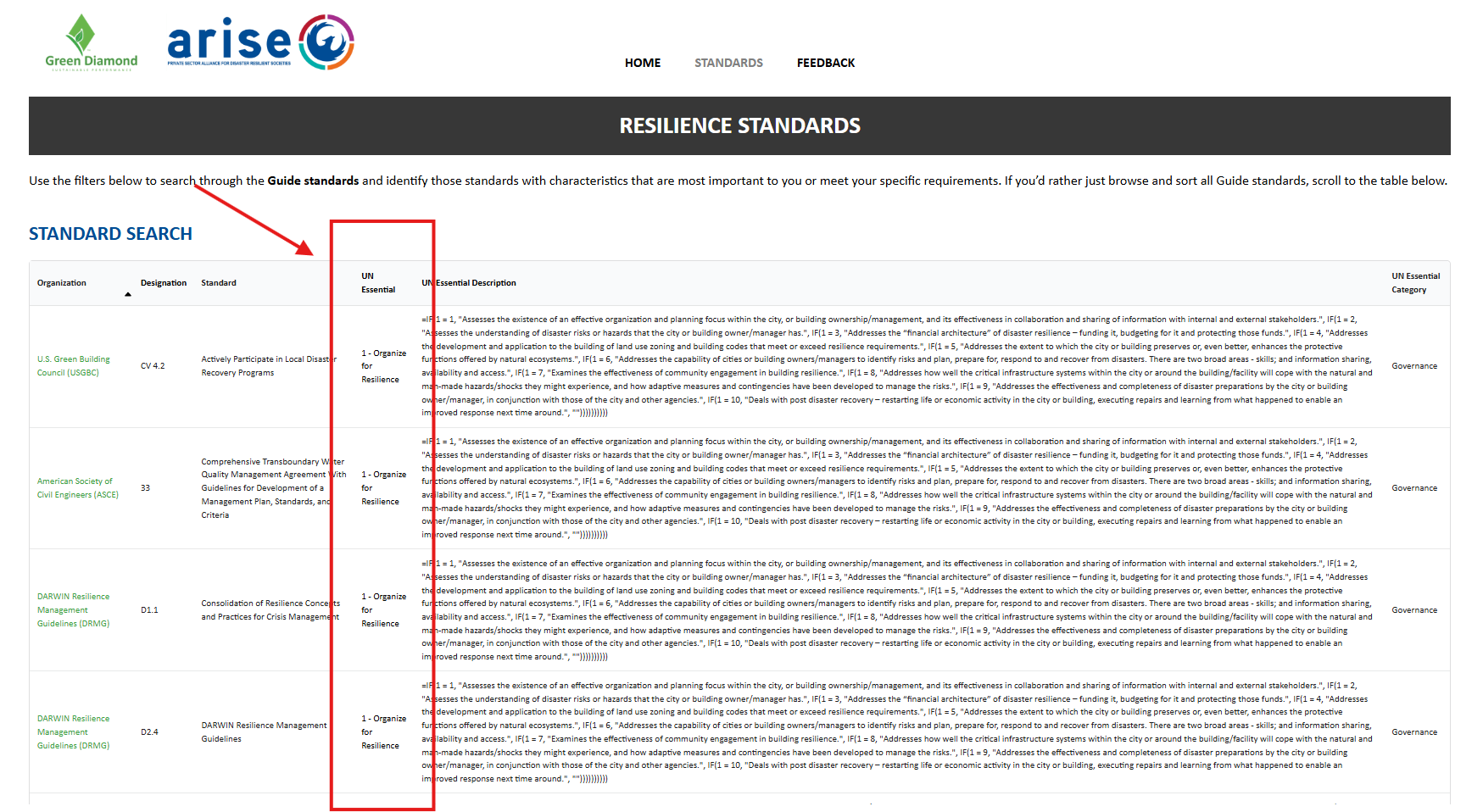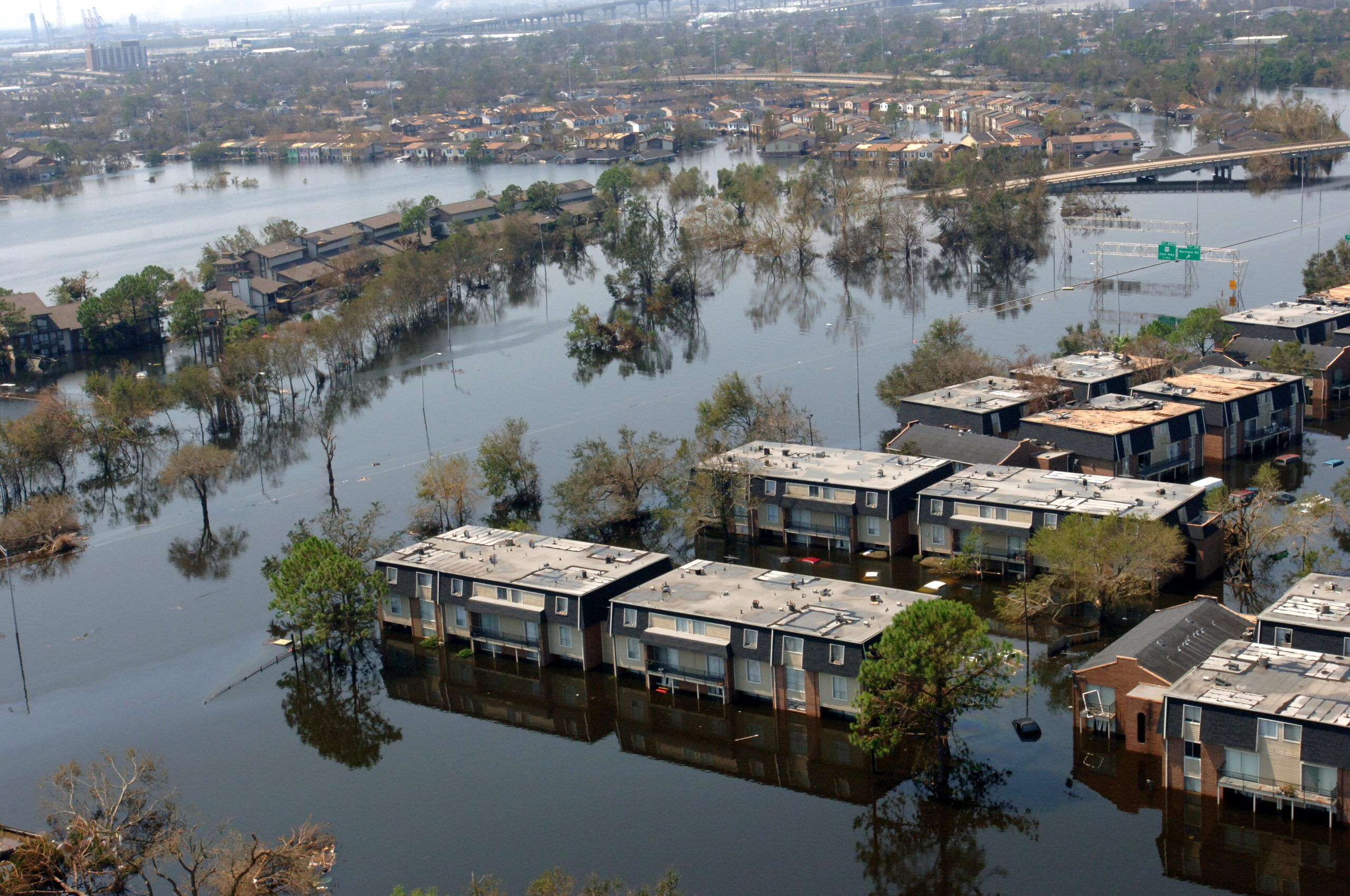From Assessment to Action: A New Tool to Support Urban Resilience

Cities around the world are stepping up efforts to reduce disaster risk and build resilience. While many tools help identify vulnerabilities, the challenge often lies in turning assessment results into meaningful and actionable resilience strategies. The Resilience Standards Database (RSD) — a new tool launched by ARISE-US, the U.S. chapter of the UNDRR Private Sector Alliance for Disaster Resilient Societies — aims to close that gap. It serves as a practical resource to help cities move from assessment to implementation by linking the results of the UNDRR Disaster Resilience Scorecard for Cities with relevant technical standards and global best practices across various sectors.
Closing the Implementation Gap
Developed to complement the Disaster Resilience Scorecard for Cities and accompanying Action Guide, the RSD provides city authorities with the tools and references to more easily design and implement effective resilience strategies. While the Scorecard helps identify strengths and gaps, it doesn’t provide specific guidance on what steps to take. The RSD fills this gap by offering a searchable repository of over 700 resilience standards. These standards outline practical methods and requirements that cities can use to apply proven practices across different areas of resilience.
“Scorecards are great at establishing baselines of current strength and weaknesses and tracking progress, but less helpful in guiding what comes next,” explains Peter Williams, ARISE-US Co-Chair.
Brian Gerber, of contributors Arizona State University adds: “The Resilience Standards Database will help the cities to transition from Scorecard assessment results to tangible actions through the use and application of various standards.”
Whether a city is retrofitting infrastructure or enhancing emergency response capacity, the RSD provides a practical starting point to ensure resilience projects are aligned with globally recognized benchmarks.

What’s Inside the Resilience Standards Database
All standards in the RSD are organized around the Ten Essentials for Making Cities Resilient, as outlined in the Sendai Framework. This structure helps users align technical standards with the specific areas identified through their Scorecard assessments, guiding investment and action where it’s most needed.
Users can filter and search the database based on a particular Essential. For example, if a city identifies a need to strengthen infrastructure resilience (Essential 8), they can quickly surface relevant codes and standards aligned with that focus. Additional filters, such as organization name or thematic area, allow users to further narrow their results.
The database includes standards from a wide range of global sources, featuring prominent US-based standards development organizations (SDOs) such as professional societies, industry associations, and code bodies that establish minimum quality and safety benchmarks across multiple sectors.
“In many countries, standards are developed through a top-down process led by governments,” explains Todd Fein of Green Diamond, another of the contributors. “In the United States, the process is largely bottom-up, with the private sector driving the development of codes and standards through SDOs. These groups often collaborate across sectors and with other experts to ensure their standards are both practical and rigorous.”
While most of the standards originate in the United States, they are developed in accordance with international principles, including those set by the World Trade Organization, making them broadly applicable across regions and income levels. Local governments can adapt them as needed to reflect local risks, economic conditions, and construction practices.
“Many of the standards in the database are considered ‘fit-for-purpose’ globally,” adds Jim Olshefsky, of contributors ASTM. “While general safety and performance requirements provide a solid baseline, jurisdictions may amend standards to better reflect local demographics, preferences, and needs.”
It is planned to add additional standards over time as these are developed, and to add search functions and case studies of the standards in use.
Who Can Benefit from the RSD?
While local governments are often at the forefront of resilience efforts, the RSD is designed for a wide range of users beyond city authorities, including national agencies, NGOs, regional authorities, and private sector actors. It serves as a practical resource for anyone involved in disaster risk reduction and resilience planning, such as:
- City Planners: Developing evidence-based urban resilience frameworks
- Resilience Offices: Designing cross-sectoral risk reduction strategies
- Policymakers: Turning vulnerability data into actionable policies and regulations
- Emergency Management Professionals: Strengthening preparedness and continuity planning
“In addition to Scorecard users, the RSD supports a wide range of actors: design professionals, planners, building officials, code enforcers, researchers, standards developers, property owners, and commercial developers,” says Peter Williams.

How Cities Can Use the RSD: Practical Examples
The RSD helps cities act on their Scorecard assessment results by linking identified gaps to technical standards that support practical implementation. Here are some ways it can be applied:
- Infrastructure Resilience: If a Scorecard identifies vulnerabilities in water, energy, or transport systems, the city can use the RSD to find relevant standards (e.g., for flood resistance or seismic safety) to guide retrofitting or new infrastructure projects.
- Building Safety: Cities can strengthen or enforce building codes using standards for wind, fire, or earthquake resilience to ensure new developments are hazard resistant.
- Zoning and Land Use: Assessment results may reveal high-risk geographic areas (e.g., flood zones), prompting updates to land use policies using standards that support safe setbacks, elevation requirements, or green buffer zones.
- Emergency Planning: The RSD includes standards for emergency response, continuity of operations, and supply chain resilience, helping cities develop more robust preparedness and recovery strategies.
- Health Systems Resilience: Standards related to water quality, air filtration, and hospital preparedness can guide improvements to protect public health during crises.
- Critical Services: If assessments show that schools, hospitals, or emergency services need upgrades, the RSD can help identify standards for backup power, structural reinforcement, or service continuity, informing targeted investments
